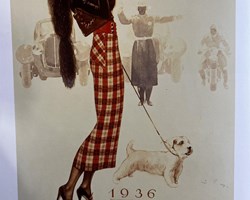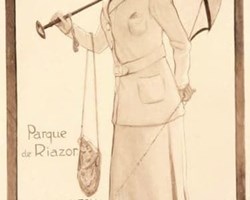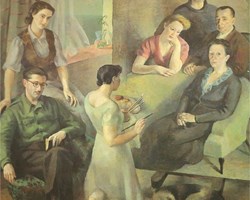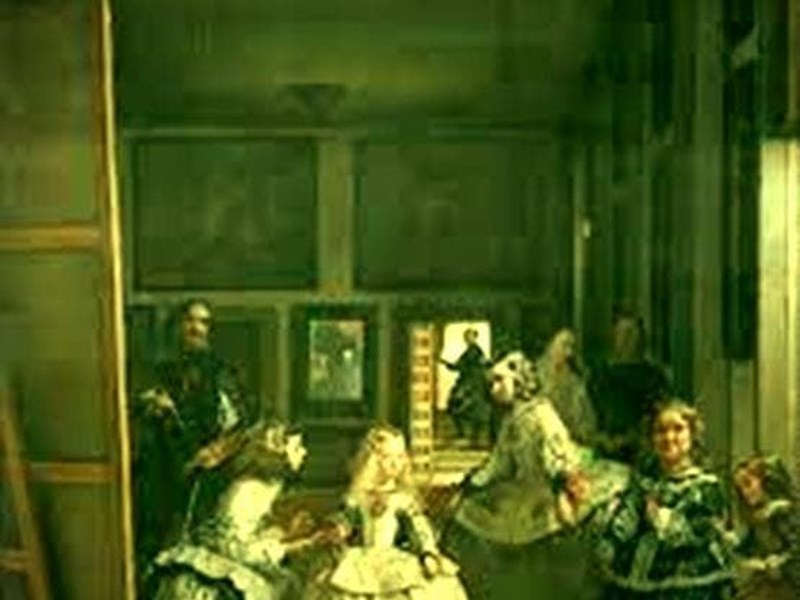
This painting is in the Prado Museum in Madrid.
It is the main painting museum in Spain and one of the most visited in the world.
There are Las Meninas, the most famous work of Diego Rodríguez de Silva Velázquez.
It was painted by the great Sevillian artist in 1656.
Velázquez was then a royal chamber painter (a painter in the service of the king, who was Philip IV of the Habsburgs).
The technique used is oil on canvas.
In the Middle Ages and still in the fifteenth century most of the paintings were murals, on walls.
But in the 17th century, oil as paint and canvas as support had already become widespread.
Dimensions: 318 x 276 cm (almost 3 x 3 meters, a very large painting).
And this is the first thing that draws attention to the painter's intention: the viewer who stands before the painting believes he is in the same room.
The floor of the room in the painting seems to be a continuation of the one we are walking on, and the characters have the size that corresponds to those of a room that opens in the same place where we are as spectators.
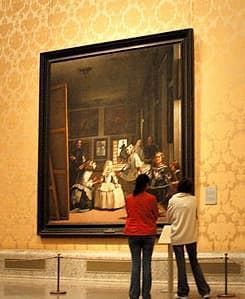
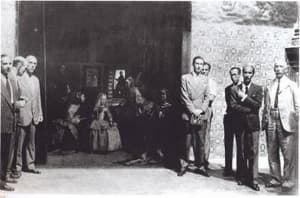
Depicts a Court Scene.
The painter is in his studio and the Infanta Margarita enters with her child companions (meninas) and her servants.
The infanta is in the center of the scene.
One of the meninas offers him water in a small jug.
In total there are eleven people and a dog:
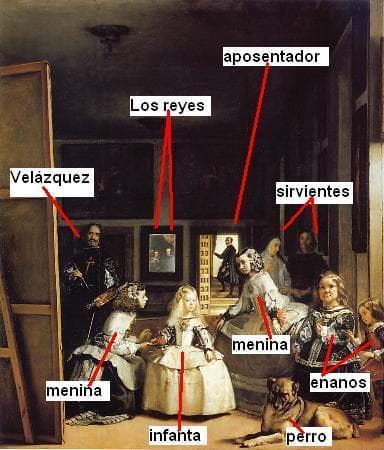
The Infanta Margarita (1).
Next to him are the meninas María Agustina Sarmiento (3) and Isabel de Velasco (2).
On the left is Velázquez (9) with his brushes, before a huge canvas whose stretcher we can see.
On the right are the dwarfs Mari Bárbola (4) and Nicolasito Pertusato (5), the latter bothering a companion dog, a Pyrenean mastiff, with his foot.
Behind the infanta we see two more characters from her small court: Doña Marcela Ulloa (6) and the unknown security guard (7).
Reflected in the mirror are the faces of the king and queen, Philip IV (10) and his second wife, Mariana of Austria (11).
The composition closes with the figure of the host José Nieto (8).
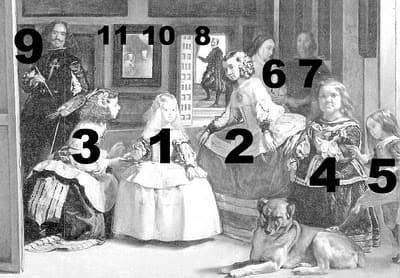
The size of these numbers tells us the planes from near to far:
Foreground: 9, 3, 1, 2, 4, 5
Background: 6 .7
Third plane: 11, 10, 8.
But the experts believe that Velázquez has taken great care in the COMPOSITION of the painting (the way of distributing the represented elements):
The heads of the characters on the left and the spots on the paintings form a circle, a symbol of perfection.
Within that circle we find the mirror with the faces of the kings, with which the painter suggests the perfection of the monarchy.
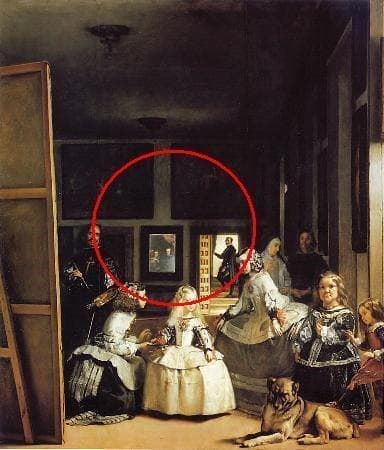
THE USE OF LIGHT:
The foreground is flooded with a powerful spotlight from the first window on the right.
The infanta is the center of the group and seems to float, since we do not see her feet, hidden in the shadow of her dress.
The figures in the background are almost in shadow, while in the background we find a new focus of light, impacting on the host who outlines his silhouette on the stairs.

THE USE OF COLOR:
The silver tones of the dresses predominate, while our attention is drawn to the rhythm marked by the notes of red that are distributed across the canvas, from left to right:
- The Cross of Santiago on the chest of Velázquez.
- The colors of your palette.
- The pot of water.
- The handkerchiefs of the infanta.
- The girl Isabel de Velasco.
- To finish in the red stain on Nicolasillo's suit.
These red notes form a series parallel to that of the heads of the characters, below it.
VELÁZQUEZ is also in the picture.
He is painting.
Almost one hundred and fifty years later, the also great painter Goya portrays the royal family, and is placed in the painting almost in the same position as Velázquez, as a tribute to the Sevillian master.
Look here The Family of Carlos IV, by Goya.
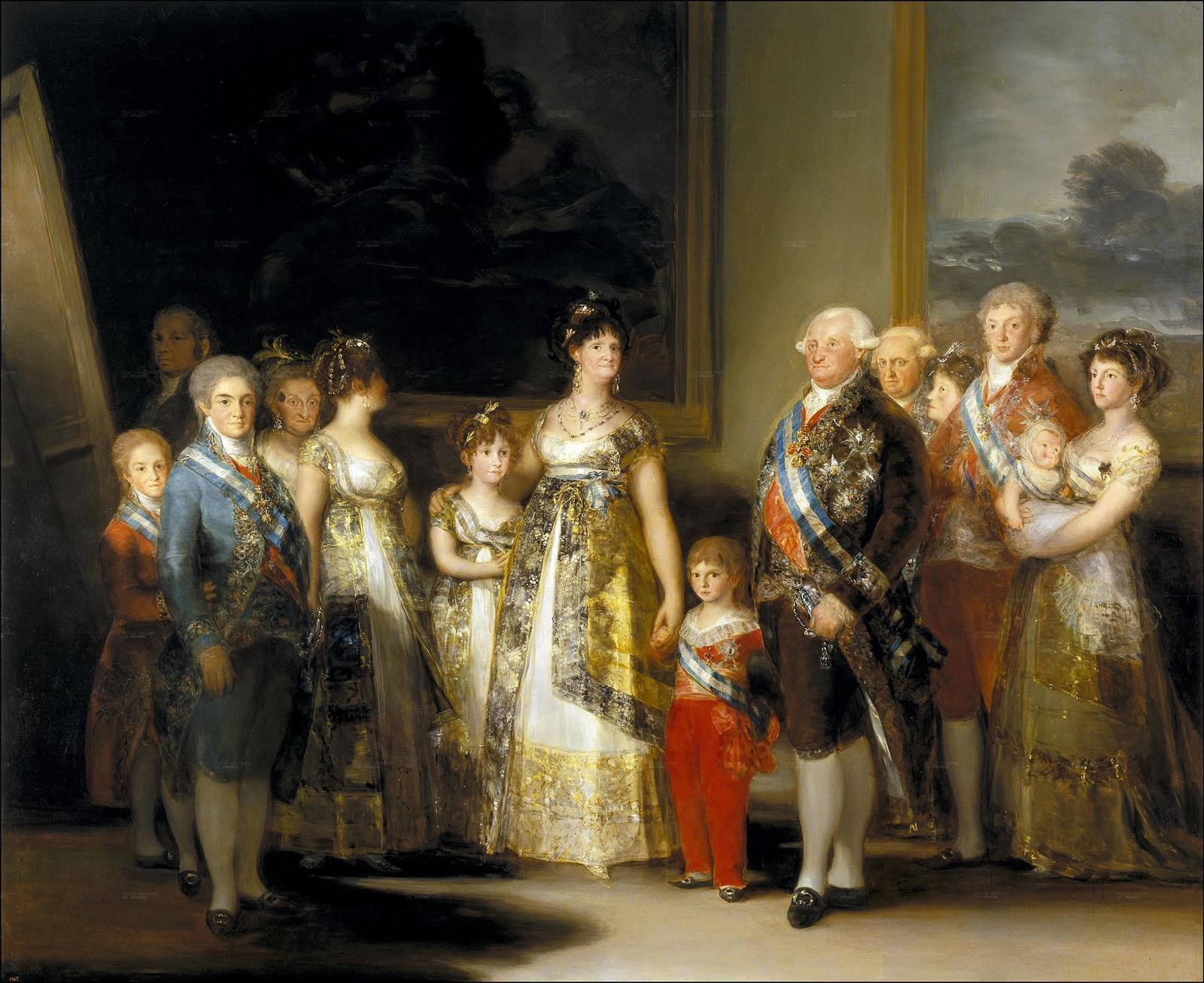
But what really strikes us is the atmospheric sensation created by the painter, the so-called AERIAL PERSPECTIVE:
It is not a work with profiles and contours, which would give it a flat appearance.
Velázquez gives depth to the scene through the air that surrounds each of the characters and blurs their contours, especially the figures in the background, which can be seen with more imprecise profiles and less intense colors.
There are many more details to observe in this painting, which prove the mastery of Velázquez, considered one of the best painters (for many the best) in history.
"True history of the dog Solomon" is a book by Miguel Ángel Fernández-Pacheco and Javier Serrano. He won the National Prize for Children's and Youth Literature in Spain in 2001.
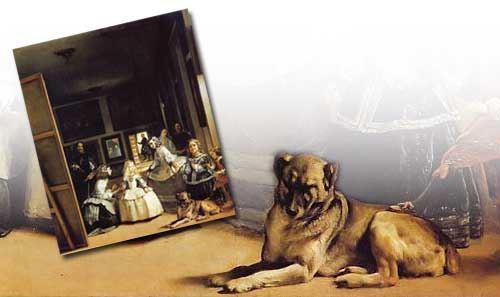
From Picasso's admiration for "Las Meninas" by Velázquez, we keep the exclamation collected by his dealer Kahnweiler ("Conversations with Picasso", Stuttgart, 1959):
«Las Meninas, what a painting! What reality! Velázquez is the true painter of reality. Whether his other paintings are good or bad, this one, in any case, is admirably, perfectly done.
Conversations with Picasso”, Stuttgart, 1959.
In the conversations that Picasso carried out with Roland Penrose (“La vie et L´oeuvre de Picasso”, 1961, the man from Malaga has also left us his own vision of “Las Meninas”:
«Velázquez is visible when in reality he shouldn't be, since he turns his back on the infanta of the first term that he has as a model. He is in front of a large canvas on which he seems to be working, but since only the back of the painting is visible, we cannot see what he is painting. Actually, he is painting the king and queen whose image we see at the back of the room. However, the fact that we see them implies that this king and queen are not looking at Velázquez but at us. And the Meninas have gathered around the painter not to pose, but to look at the portrait of the king and queen, and like these, we, spectators, are behind them».
La vie et L'oeuvre de Picasso.
Velázquez, in "Las Meninas" established a network of complex relationships between the different characters represented on the canvas and the viewer who contemplates the work, thus tracing links between the pictorial space and external reality. Such aspects interested and strongly motivated Picasso when considering carrying out his variations on the work of Velázquez.
The undertaking, on a pictorial level, was arduous, and even more so considering that at that time Picasso was suffering from leg pain, and Jacqueline had just undergone surgery. As was customary, during the time it took to paint "Las Meninas", Picasso secluded himself in his studio with hardly any visitors. H. Parmelin (“Picasso sur la place”), leaves us a testimony of the artist himself, who says:
«Las Meninas are Furies that follow you on the way to the bullfights and to the tables full of lunches in Nimes, to the paellas in the Camargue, to Marseille itself».
Picasso on the place.
Las Meninas by Picasso analysis
In the fifties, Picasso painted a series of paintings in which he sought to deconstruct (carry out an analytical study of the different elements that make up the conceptual structure of a work) and reinterpret some of the most representative paintings of the classics: “ Lunch on the Grass” by Manet, “The Women of Algiers” by Delacroix”, “Las Meninas” by Velázquez… At that time, the interest of critics in Picasso focused more on his Cubist period than on his current work. Picasso's painting was being assumed, little by little, as "traditional". In other words, for specialists and followers, the artist from Malaga began to be seen more as an artist from the past than from the present. In this context, between August 17 and December 30, 1957, taking as reference a black and white photograph of the famous painting by Velázquez, Picasso carried out the series of 45 paintings inspired by "Las Meninas" by Velázquez, plus 9 paintings on pigeons, inspired by the dovecote that the artist had installed on the terrace of his second residence, "Villa Californie" (Cannes), 3 landscapes and a portrait of his partner, Jaccqueline Roque (on August 16, Picasso had made a preparatory drawing for the series).
The technique used was oil on canvas, although the measurements of the canvases vary greatly, from large formats (194 cm. x 260 cm.), to smaller ones, 18 x 14 cm. All the works are dated, indicating the date, and even the time of their execution, so we can verify that some days he painted up to six works.
The series currently occupies three rooms of the "Museu Picasso" in Barcelona, following the specifications of the painter himself who donated it in 1969 (after the death of his friend and personal secretary Sabartés, in 1968), with the instruction that a room be established in his honor.
The second floor of “La Villa Californie”, as a workshop. Picasso's Meninas
To tackle the series, Picasso set up the second floor of “La Villa Californie” as a workshop, which was uninhabited at the time. One aspect to note is that for the first and largest of the works, Picasso chose a canvas in horizontal format, thereby substantially varying the dimensions and proportions in relation to the original work. Picasso knew that by changing the size and orientation of the canvas, he would inevitably change the “atmosphere” and the arrangement of the characters, giving his work a more personal character. In fact, the man from Malaga is not satisfied with the general version he makes of “Las Meninas” and continues to represent, either individually, or together, and from all possible angles, the characters that appear in Velázquez's painting. For this series, Picasso returns to cubism, more or less distorted, working both figures and backgrounds through planes. Thus, the Picasso versions end up modifying our perception of Velázquez's work. We must bear in mind that “Las Meninas” from Velázquez, in addition to being a masterful work in what has to do with the pictorial representation of space (through perspective, “atmosphere”, reflections…), is, first of all, , a reflection on the creative process, a subject much to Picasso's liking. In “Las Meninas”, Velázquez had already tried to challenge the conventions of the time, incorporating into the work “the space from which the viewer observes the scene”, through the images reflected in the mirror (the kings). Picasso had also provided a new way of dealing with the representation of reality through cubism, so the subject was of interest to him.
Although, when facing a great work, the artist used to make numerous sketches and previous studies, in the case of "Las Meninas", there are no previous sketches or drawings that end up culminating in a masterpiece. Actually, the artist throws himself into the void from the first work of the series and, each one of the following ones, approaches them as a phase, complete in itself, of the creative act itself, leaving proof that the same image can be approached from different points of view, varying the technique, expression, color, proportions, etc.
Thus, we can consider that with his “Meninas”, Picasso is facing his own reaffirmation as an artist, by confronting his work with that of one of the great giants of painting, while also reaffirming himself as a rabidly contemporary artist.
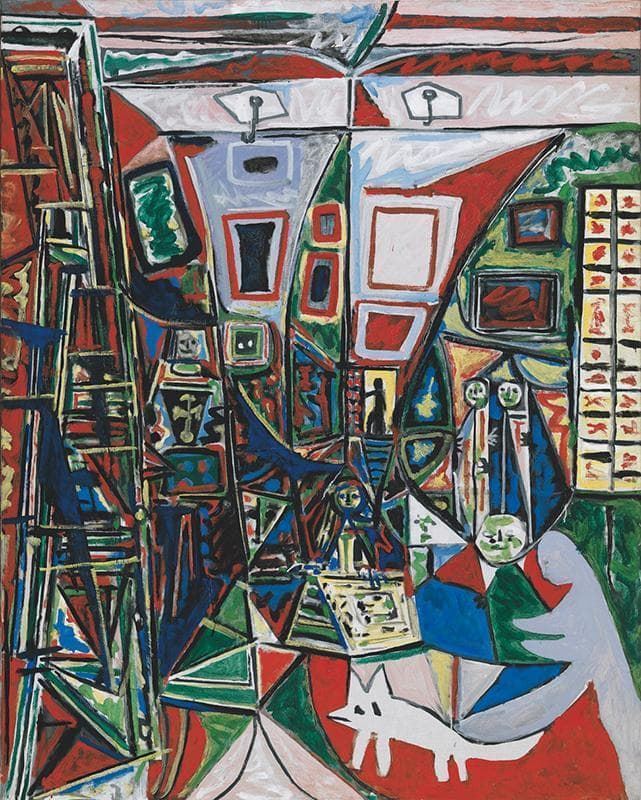
Pablo Picasso. Las Meninas. Cannes, October 2, 1957. Picasso Museum, Barcelona.
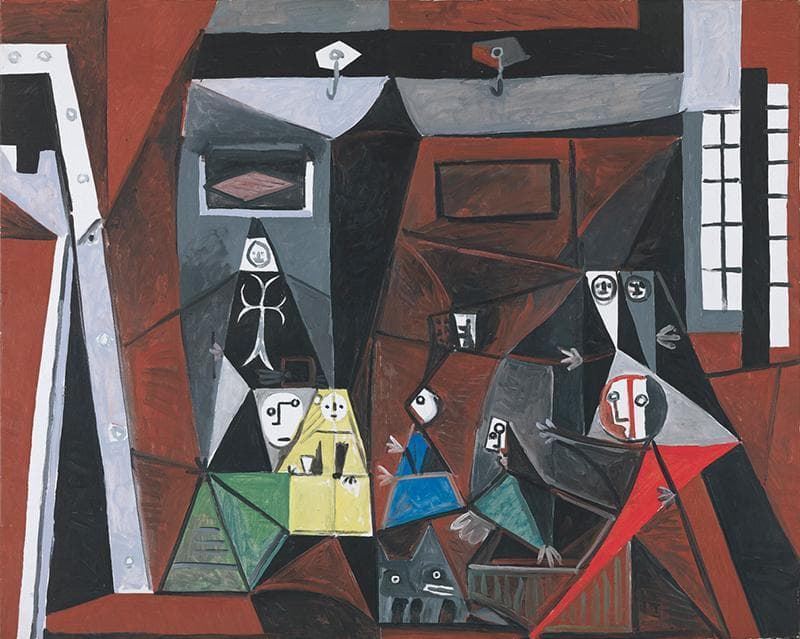 Pablo Picasso. Las Meninas. Cannes, October 3, 1957. Picasso Museum, Barcelona.
Pablo Picasso. Las Meninas. Cannes, October 3, 1957. Picasso Museum, Barcelona.
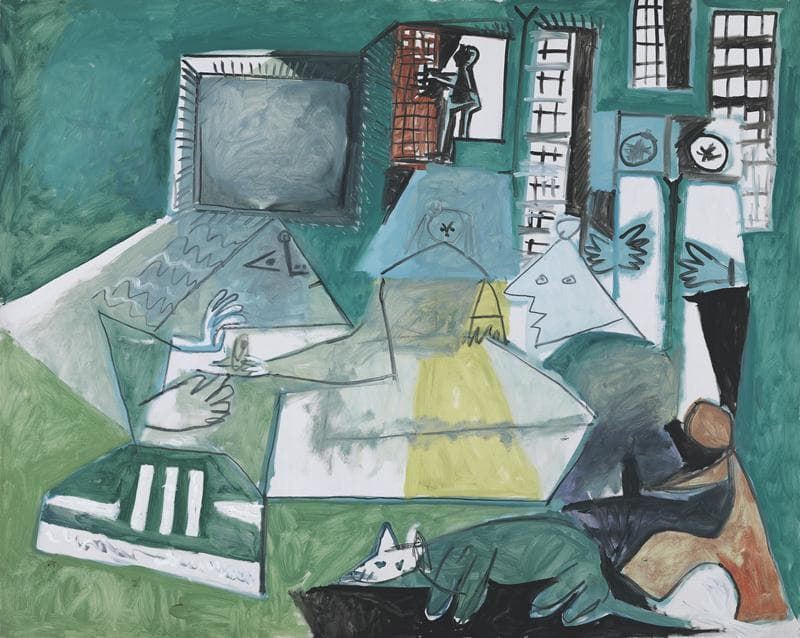
Pablo Picasso. Las Meninas. Cannes, September 15, 1957. Museu Picasso, Barcelona.
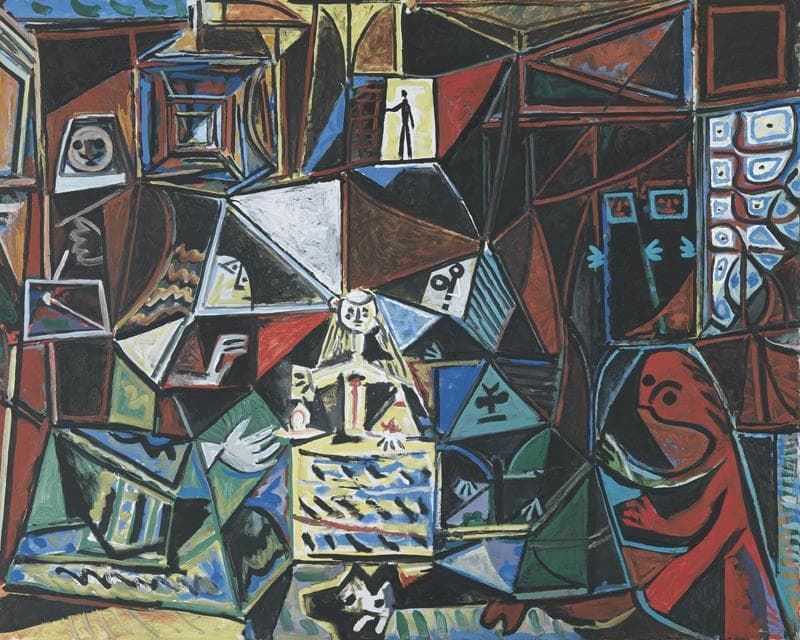
Pablo Picasso. Las Meninas. Cannes, September 18, 1957. Museu Picasso, Barcelona.
THE PROCESS OF CREATING LAS MENINAS:
It is evident that the man from Malaga did not seek at any time to make a copy of the painting from Velázquez.
Picasso began the series by tackling a large 194 x 260 cm canvas, providing an overview of the work.
It is a grisaille in which the tones have been reduced to gray and black (just like “El Guernica”).
Later he painted other smaller canvases in which he focused on the group of characters that surrounds the infanta and her meninas, the dog, the infanta alone, etc.
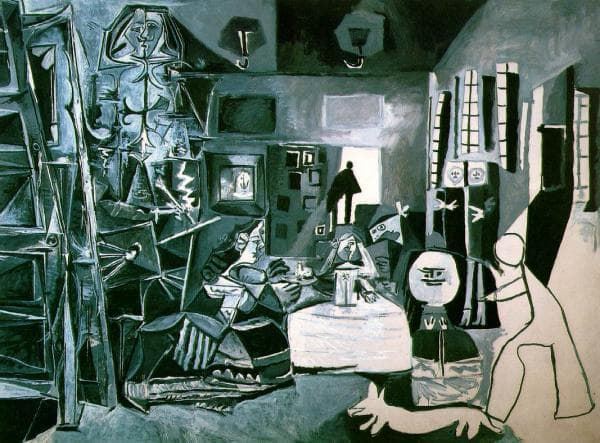
Pablo Picasso. Las Meninas. Cannes, August 17, 1957. Picasso Museum, Barcelona.
Picasso was not limited to the earthy tones used by Velázquez either, but instead displayed a wide range of colors in his series.
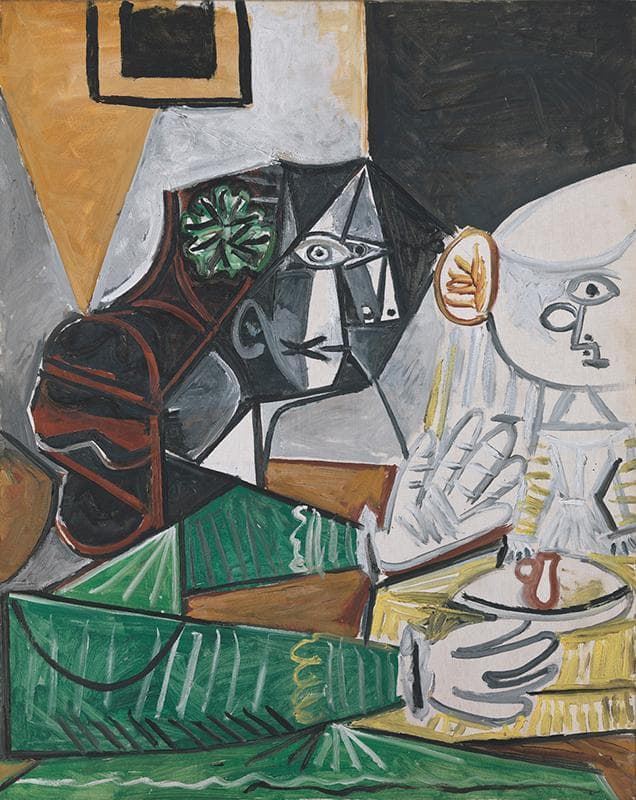
Pablo Picasso. Las Meninas (María Agustina Sarmiento and Infanta Margarita María). Cannes, October 10, 1957.
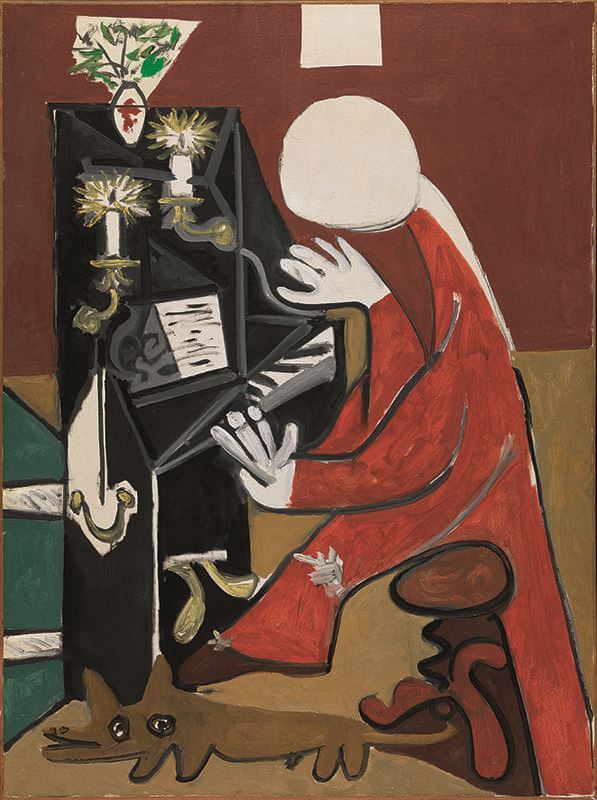
Pablo Picasso. The piano. Cannes, October 17, 1957. Picasso Museum, Barcelona.
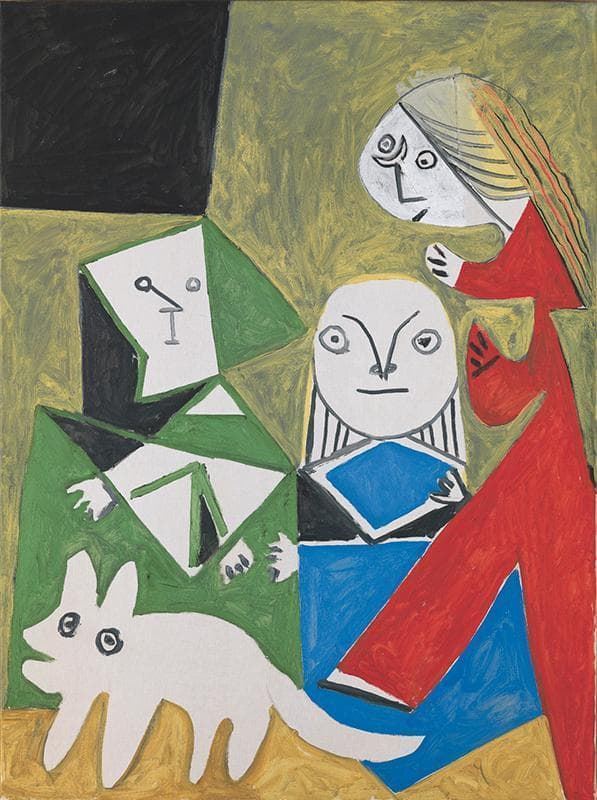
Pablo Picasso. Las Meninas (Isabel de Velasco, María Bárbola and Nicolasito Pertusato). Cannes, October 24, 1957.

The Meninas (Isabel de Velasco). Cannes, November 17, 1957. Picasso Museum, Barcelona.
As Jaume Sabartés wrote in the text he wrote about the gestation of the work (“Les Menines et la vie” edited in 1958 by Cercle d'Art in Paris), the idea of painting a recreation of “Las Meninas” by Velázquez , had haunted the artist's head since 1952: “I imagine he had it in his memory like a nightmare; This would be why he wanted to get rid of it by studying it thoroughly, character by character, element by element, and offer us the result as a lesson, to teach us to see Velázquez's work without straining our eyes, all of Velázquez's work through his Meninas ”.
According to Sabartes, Picasso even commented to him: “If one were to copy Las Meninas in good faith, what would it be like to put this one a little more to the right or to the left? I would try to do it my way, forgetting Velázquez. (...) So little by little, he would paint some Meninas that would seem detestable to the professional copyist; They would not be the ones he would think he had seen on Velázquez's canvas, but they would be my Meninas…”
The “Las Meninas” series was exhibited at the beginning of 1958 in London, Paris and Tokyo.
In 1968, in the midst of Franco's dictatorship, the series arrived in Barcelona, being housed in the Museu Picasso in Barcelona.
Other related articles:
Articles on Glu Glu Pet that might interest you:
- Easy Walk anti-pull harness.
- San Dimas car safety harness.
- Small portable drinker 250ml.
- EARTH RATED LAVENDER HYGIENIC BAGS / UNIT.
- EARTH RATED LAVENDER HYGIENIC BAGS PACK 8.
- Hygienic bags in Nayeco colors 4 units.
- HYGIENIC BAGS FOR DOGS DAPAC 3 units.
- HYGIENIC BAGS POO BAGS 8UNS. BIODEGRADABLE.
- BON TON NANO BAGS.
- Bon Ton nano bone.
- BON TON PI.
- Comfort Walker boots for dogs.
- Baskerville muzzle.
- Molossian basket muzzle.
- Basket muzzle for dogs.
- Trixie nylon muzzle for dogs.
- NOBBY MUZZLES WITH BOW.
- INFLATABLE ELIZABETH COLLAR.
- Foldable silicone travel feeder / drinker.
- BOLL FEEDER FOR DOGS AND CATS YUMMYNATOR.
- Reflective jogging strap.
- CUT SMALL KNOTS.
- 3 CLAVELES MEDIUM NAIL CLIPPERS.
- Adhesive pads 60x60 10 units.
- Super absorbent pads with adhesive 56X56 30 units.
- DOG SAFETY BELT HITCH.
- PROTECTIVE COVER CAR SEATS 1.40X1.00 PAJERO / SHOGUN PET.
- COOLING BLANKET.




